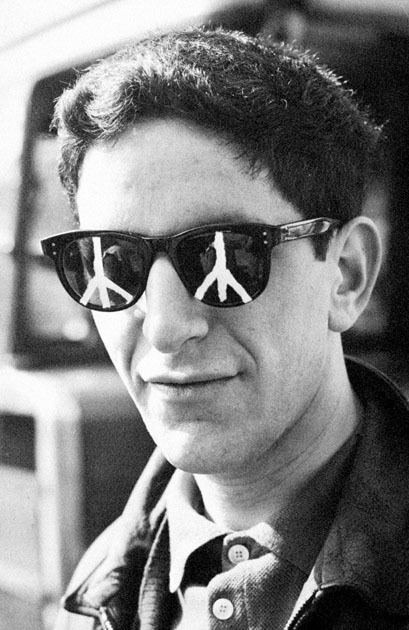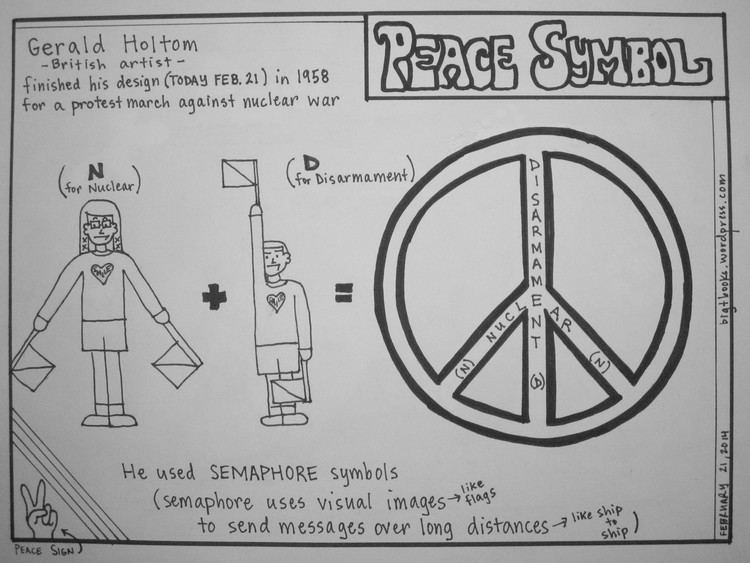Name Gerald Holtom Role Designer | ||
 | ||
Died September 18, 1985, England, United Kingdom | ||
Gerald Herbert Holtom (20 January 1914 – 18 September 1985) was a British artist and designer. He designed the logo of the British Campaign for Nuclear Disarmament (CND), which became an international peace symbol.
Contents
CND symbol

Holtom was a graduate of the Royal College of Art. He had been a conscientious objector in World War II. In 1958 he was working for the Ministry of Education. On 21 February 1958 he designed the nuclear disarmament logo for the first Aldermaston March, organised by the Direct Action Committee against Nuclear War (DAC) in Easter 1958 (4–7 April).

There are differing accounts of how the symbol came to be designed. According to Christopher Driver, who wrote about CND in a 1964 book, The Disarmers, Holtom brought the design, unsolicited, to the chairperson of his local anti-nuclear group in Twickenham and alternative versions were shown at the inaugural meeting of the London CND. Driver wrote, "The first mark on paper, according to Mr Holtom, was a white circle within a black square, followed by various versions of the Christian cross within the circle. But the cross, for these people, had too many wrong associations - with the Crusaders, with military medals, with the public blessing by an American chaplain of the plane that flew to Hiroshima - and eventually the arms of the cross were allowed to drop, forming the composite basic semaphore signal for the letters N and D, and at the same time a gesture of human despair against the background of a round globe. Eric Austen, who adapted the symbol for Holtom's waterproof "lollipops" on sticks to ceramic lapel badges, is said to have "discovered that the 'gesture of despair' motif had long been associated with 'the death of man', and the circle with 'the unborn child'." According to CND, Holtom was invited by the DAC to design artwork for the Aldermaston March. He showed his preliminary sketches to a DAC meeting in February 1958 at the Peace News offices in North London.

The logo was not copyrighted and later became known in the wider world as a general-purpose peace symbol. The design was a combination of the letters "N" (two arms outstretched pointing down at 45 degrees) and "D" (one arm upraised above the head) of the flag semaphore alphabet, standing for nuclear disarmament.
Personal life
Holtom had six children, four with his first wife: Peter, Julia, Anna (now Anna Scott, an artist) and Benjamin; and two with his second wife, Darius and Rebecca (also an artist).
